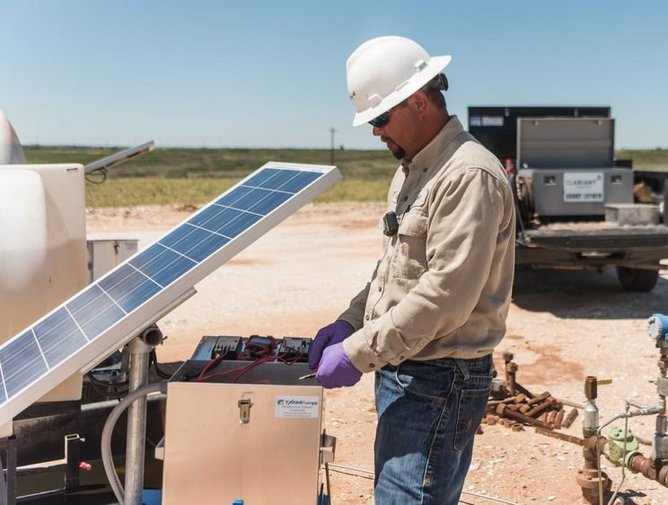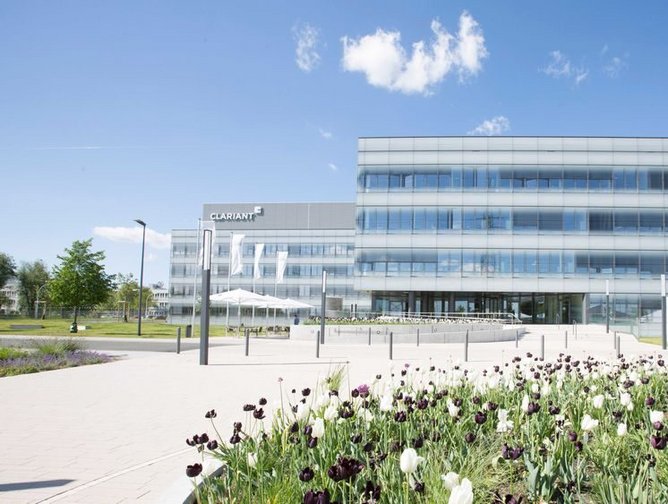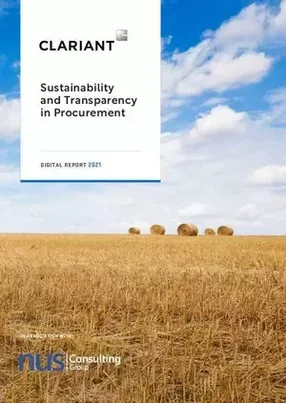Clariant: sustainability and transparency in procurement
With Clariant being a Europe-based player in the chemicals industry, Markus Mirgeler, Head of Group Procurement explains that “the challenge for anybody in Europe is greenhouse gas (GHG) emissions reduction, and this is spreading globally.” Interestingly, Mirgeler reflects that most CO2 emissions are coming from the suppliers in the chemicals industry. “A chemical company’s operation makes up around 30% of its greenhouse gas emissions, whilst the main share comes from the upstream and downstream value chain activities. For Clariant, a significant share is generated from the raw materials procured.”
With most organisations having a 10 year timeframe, which outlines how much they want to have reduced their GHG emissions by 2030, 2035 or 2040, Mirgeler explains that “at Clariant we have defined science-based climate targets that we want to achieve by 2030. But in the chemicals industry this requires technology changes, which we know can take four to five years, so if you don’t have an idea by 2024 of what you want to do, there is no way you can achieve the target in 2030.” Whilst the timeline seems long, by the time each element comes together there are only a few years left to achieve the desired targets.
Specifically looking at indirect GHG emissions from suppliers, Mirgeler discusses the importance of directly engaging with them, “ask ‘what can I do for you?’ in order to reduce or change their technologies to reduce GHG emissions.” Other ways the chemical industry can reduce its GHG emissions include taking a more local approach for supply to reduce transportation. “This is a big trend, and you have to create a balance. A lot of the raw materials that we are buying originates from China, India, Indonesia, and Vietnam. You have to look back and say, ‘maybe I need to buy some things more locally in the US for our plants there, or in Europe for those in that region’. Obviously, this may result in more expense but, on the counterbalance, you get a better CO2 footprint and you’re doing something good for the environment.”
With this thought, Mirgeler reflects on the challenges of adopting sustainable methods depending on the types of consumer being sold to. “If you look at companies in the consumer products areas, they committed that a large portion of their cleaning products will be free of fossil oil derivatives by the year 2025. That's not far out in time. That's a real challenge. So now of course, you can imagine they ask suppliers ‘you're supplying me these raw materials for X, can you make them bio based or can you get this out of recycled products.’ Given the timeframe, this is of course also an opportunity for suppliers to change the way they looked at their portfolio in history.
Giving an example of what he means, Mirgeler says “if you look into catalysts, what is the raw material of a catalyst that we're supplying to an industrial application. More and more questions arise ‘where are the materials coming from? What are the mining operations? What about child labour?’ Industry to industry we are seeing a much higher level of responsibility and curiosity around transparency of value chains. For the chemical industry this is quite new.”
When it comes to procurement transparency at Clariant, Mirgeler reflects that the company has been using automation for many years, “It wasn't probably called digital at the time, but we have a really seamless process. We have a fully automated rate of 80% of our purchase orders from demand to placing it at the supplier.” In addition to this automation, Mirgeler also explains that Clariant has a negotiations robot available. However, he adds that the big question is “how much do you want to automate? Clariant has 25,000 suppliers, and a lot of orders in the chemicals industry are repetitive. Without automation, we wouldn’t be able to manage.”
This is not what saves Clariant costs in procurement. Mirgeler explains that to drive cost saving “we need to look at artificial intelligence (AI) or digital tools to reduce spend. Our focus is where we can have technologies help us to make smarter decisions on when we buy, where we buy and how we buy.” An example of how Clariant is harnessing AI in this way is for forecasting. “We have launched a raw material forecasting tool for ourselves, which essentially simulates raw materials prices applying artificial intelligence, so we can make smarter decisions on when is the best time to buy certain raw materials, it's very specific, but very powerful. We call this end to end forecasting, this is actually quite interesting, and we actually have a collaboration with our developing company for further improvements.”
When asked about the importance of cost savings, Mirgeler states, “of course, savings are essential in business. So we have targets, we have them broken down into each category and buyer, identifying seven areas where we are active and where we are providing actual value, whether this is employee engagement and development of people or if it's looking at the inventories that we can control, the cash that we can generate, or moving non-core activities to suppliers.”
Circling back to GHG emissions management, Mirgeler emphasises this as a challenge for the industry, “currently we’re engaging into solar based power generation, and contracts with wind parks to get renewable energies into our sites. Clariant’s made quite some progress to increase the supply of renewable energy in recent years.” A particular interest for Mirgeler when it comes to sustainability is transparency, “supply chain transparency is good for the industry,” says Mirgeler, “but one of the secrets of making chemicals is what ingredients you have, and you don’t want anyone else to know this. This then presents supply chain transparency challenges when 60% of what you are buying is from the chemicals industry,” explains Mirgeler. “In the chemical industry we all make chemicals. If I know which chemical you are producing and how you produce it, I can probably make it very quickly myself.” Using the food industry as an analogy, Mirgeler continues, “Whoever buys food doesn't raise pigs. So, you can talk about where you get your pigs from or where you get your beef from. But in the chemicals industry, we're all doing the same kind of things and there is a needed trust level between supplier and customer to engage into a higher level of transparency.
Whilst these challenges are prominent in the industry, Mirgeler concludes that “if you talk about challenges for Clariant Procurement, firstly it is to make our business more profitable, then it is now to engage with suppliers to reduce GHG, and to enable differentiation for our company via supply chain transparency and last but not least it is holistic supplier risk management and the values beyond savings we can provide to our company.




